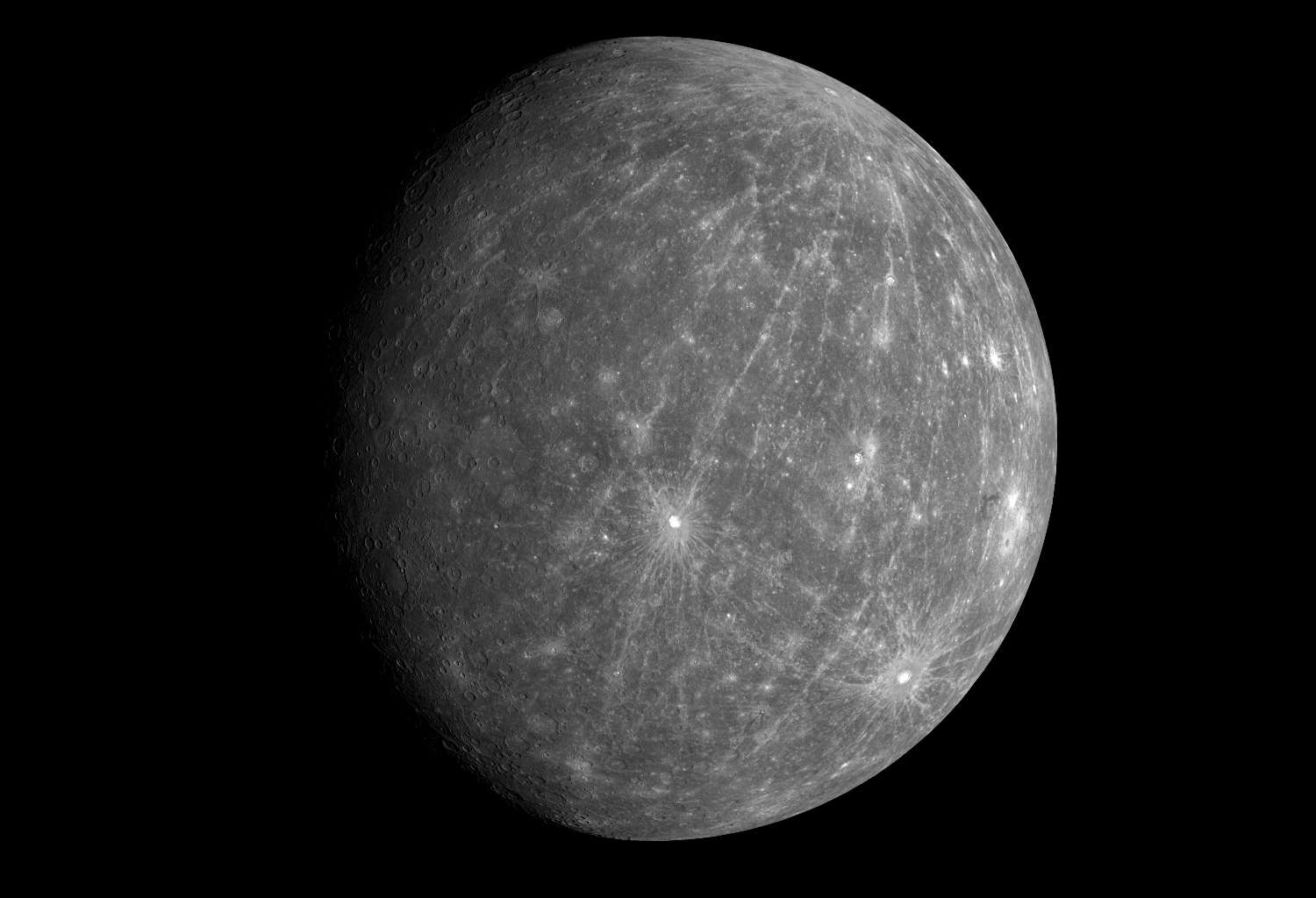Mercury got the ultimate sunburn from solar plasma, and that's how we know it has a magnetic field
As if there aren’t enough reasons to wear SPF already, you now have one more.

When you’re the closest planet to the Sun and a coronal mass ejection explodes in your face, you have no escape — especially when you have no magnetic field to hide behind.
Unlike the terrified masses in the 2009 SYFY original film Star Runners, who hide under solar flare shields so they don’t end up being burned to death in the heat of a solar storm, Mercury is a naked planet constantly hit with plasma from our star. That plasma brings an onslaught of charged particles. Weirdly enough, it gives Mercury, which can’t really hold on to much of an atmosphere for too long, a temporary atmosphere. This has also proven that Mercury has something of a magnetic field.
Researcher Hui Chang, who led two studies recently published in Nature Communications and Science China Technological Sciences, found out that Mercury has more magnetism than we thought because that coronal mass ejection set off a geomagnetic storm.
“The existence of Mercury’s magnetic storm is also revealed from the magnetic field observations obtained by the MESSENGER spacecraft just before its impact on the solid surface of Mercury,” she told SYFY WIRE. “This magnetic storm was similar to Earth’s.”
After the Sun recently threw a tantrum otherwise known as a coronal mass ejection (CME), when it vomited gobs of magnetic field and plasma from its atmosphere into space, Mercury was bombarded within less than a day. Blame a sunspot rupturing. Sunspots are outbursts waiting to happen, with intense magnetic fields that get tangled and eventually snap, and this one unleashed a massive plasma wave. So how did a geomagnetic storm happen if Mercury supposedly has almost no magnetic field? It actually has more than we previously thought.
As Chang and her team found out, Mercury may not have a full-on magnetic field, but what it does have is a ring current. Charged particles stream in a ring that flows around a field line between its poles. When solar particles interacted with the particles in the ring current, a weak magnetic field, it showed it was still strong enough for a geomagnetic storm to occur. These are the same kinds of storms that can wreak havoc on everything from our satellites to our internet to our electrical infrastructure when they strike Earth. They also light up auroras.
“Magnetic reconnection can open a channel which allows charged particles with lower energy from CMEs to constantly replenish something of an atmosphere on Mercury,” said Chang. “The electron bombardment induces X-ray fluorescence, analogous to an aurora on Earth.”
Plasma is alive with magnetic field lines, and when field lines that are opposite each other break and reconnect, that is the phenomenon of magnetic reconnection. The magnetic field energy that is released from the breaks morphs into thermal and kinetic energy in the onrush of plasma that a star belches out. Geomagnetic storms go through phases after the particles in solar plasma crash into magnetic field particles. During the initial and main phases, charged particles near the planet energize and plunge deep into the magnetosphere, which can cause an aurora. The recovery phase is when the magnetosphere recovers from this disruption.
Being blasted with plasma intensified Mercury’s ring current and brought on the main phase of the storm. During the recovery phase, that ring current decayed. So Mercury might not have the strongest magnetic field ever, and barely what could be considered an atmosphere, but geomagnetic storms can still happen. Li believes this can be used as an example when trying to see if magnetic storms occur on other planets. While the solar cycle isn’t completely understood, she has an idea of what powers it.
“The differential rotation between equator and pole in the convective zone and photosphere drives the powerful solar dynamo,” she said. “It causes the magnetic field to become concentrated, rising up through the photosphere to form loops and sunspots.”
As if there aren’t enough reasons to wear SPF already, you now have one more.



























